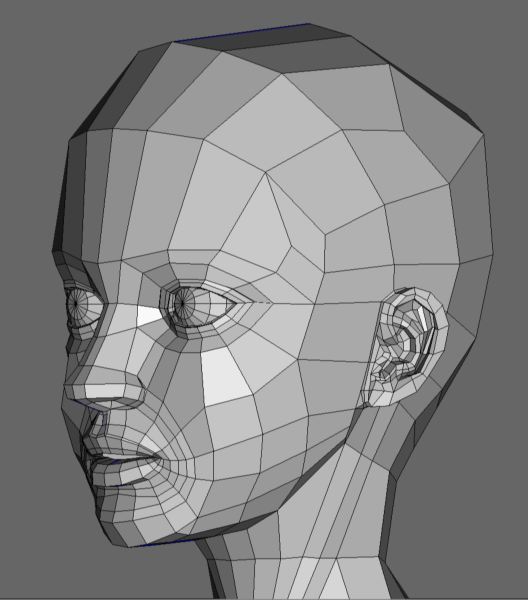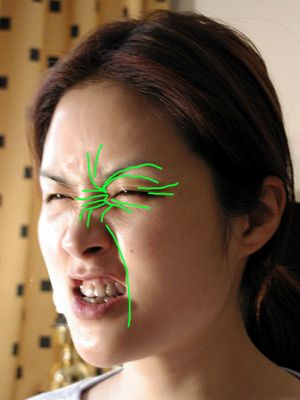
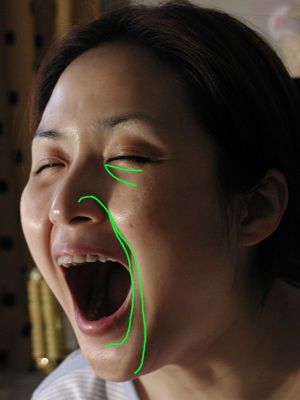
Topology Research
I was kind of obsessed with topology efficiency, and here's my attempt to come up with the most efficient prototype base topology that can be used for characters of any age, sex, or race (within reason, of course).
Finding the Paths
I had Elena make all kinds of expressions and took pictures, then threw them in Photoshop and defined the "roadmaps" of major wrinkles.


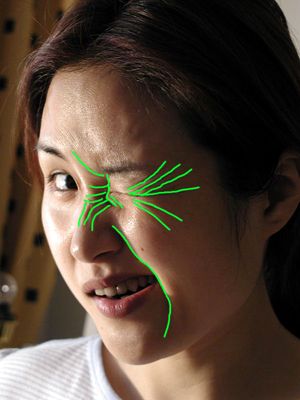
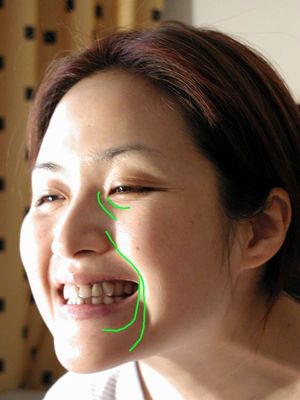
I found this picture on the internet, and it just about contained all the major wrinkles in the upper half of the face (the wrinkles in the bottom half aren't as defined as people with less fat.)
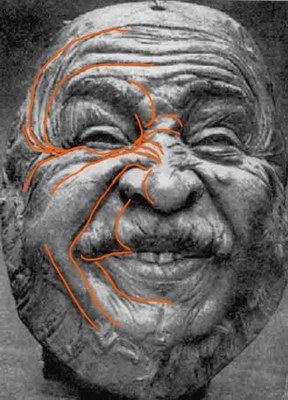
Defining the Roadmap
After searching out all the "paths" on the face, I then tried to define a "roadmap" to unite all the paths, and come up with an efficient topology in Photoshop. I find this method much faster/effective than jumping straight into modelling, since changing lines in Photoshop is much faster than tweaking a 3D mesh.
The darker lines are the basic topology, and the lighter lines are the more detailed splits.
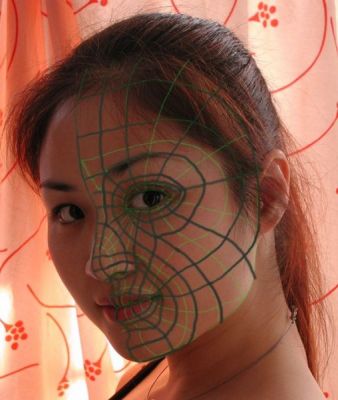
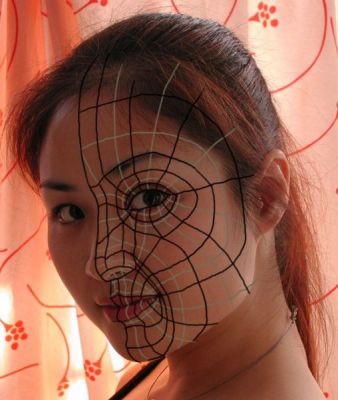
Poor Elena--victim of my experiments. She's such a good sport when it comes to modelling for me and other annoying things.
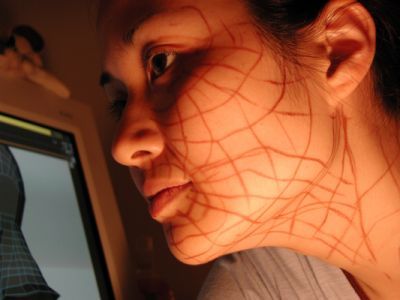
Standing On the Shoulder of Giants
I'm a firm believer in "Don't try to reinvent the wheel." The problem is, although I see tolopogy from other people's modelling that I really like, there always seem to be a few small things I would've done differently. So, I went through all the wireframe pictures I have collected over the years, and found a few that I thought were the closest to my ideal, then remapped a couple in Photoshop according to what I've learned from previous experiments.
This mesh was posted by Phreaknasty on cgtalk.com. He was trying to do the same thing I was--come up with the perfect base topology. I liked his result a lot, and only very minor changes were needed to get it to what I was after (pink lines are where I changed things, and blue are the same as his).
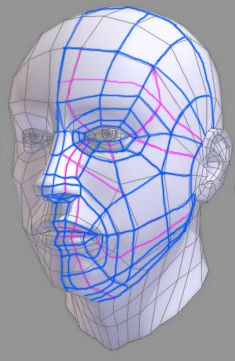
This one is Steven Stahlberg's level zero Sub'D base mesh in Maya. Steven's mesh is also excellent, and I found it almost perfect, if somewhat unorthodoxed looking in its arrangent. I made some minor changes so that it fits my own working habits more (I drew the yellow lines to visualize how I'd differ from his design).
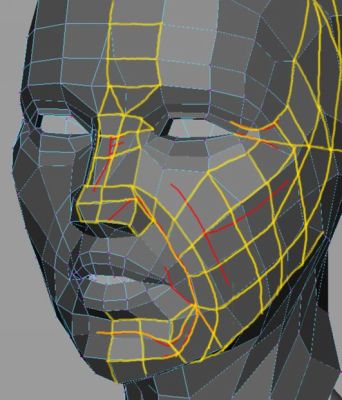
This was my first attempt to model the prototype topology in Softimage XSI. Since XSI comes with basic head meshes as primitives, I just grabbed the female one, tore it up, and modelled in my own topology. After posting it at cgtalk, people started discussing the pros and cons of spiral loops and loop rings. I realized that a closed ring loop would be easier to manipulate--especially once the mesh becomes more detailed. So, back to modelling.
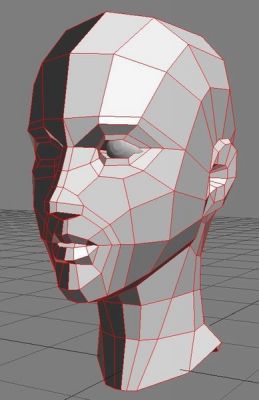
I remembered the Ruu model I did in Maya had pretty good topology in some areas, so I tore out the eyes, nose, and mouth, then merged it with my prototype head in Maya. I then exported to Wings3D and deleted a bunch of edges to make the mesh lighter and more appropriate for a base mesh. After some more tweaking, I ended up with this finished prototype base mesh. It pretty much looks like a cross between Phreaknasty and Steven's mesh, with some bits of my own craziness thrown in. From now on, I'll just use this mesh as the starting point for all of my head modelling. Some people debated against using a base mesh, saying that one should start from scractch everytime modelling a head. Steven and I both agree that it's a silly notion, and it's pretty pointless to start from scratch everytime. My reason for thinking that is:
I don't model for fun. I model to get it done so I can then rig it, texture it, and animate it for my film. It is counter-productive and a waste of time to start from scratch everytime I model a character. Sure, if I had all the time in the world and wanted to just model for the sake of fun and artistic ascension, I'd take my sweet time and fumble with a primitive box just for kicks and giggles. But Im' not in a position to waste time, so I'm against it.
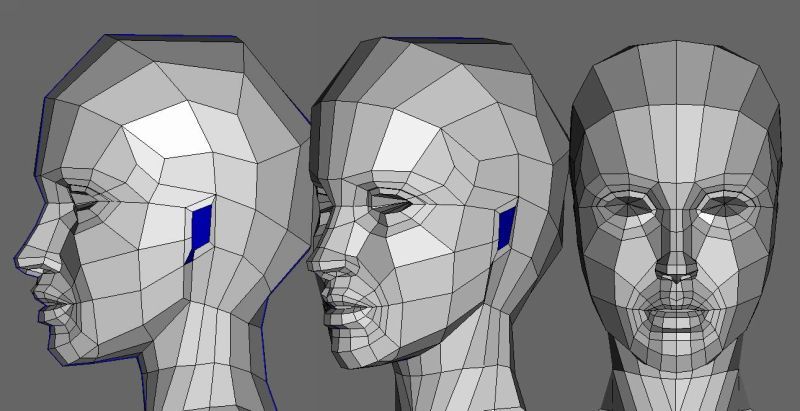
The current topology I'm using on my characters for my short film.
